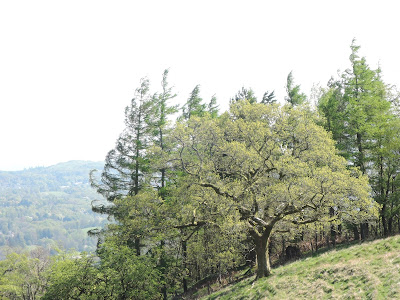Although it is now June we are still finding ourselves
repairing boundary walls and fences caused by the devastating floods last
December.
Last week we finally got to one of the last remaining fences
that had been destroyed by a landslide.
About 80 metres of fence had been completely destroyed and
needed replacing, before the farmer could let his sheep back onto the fell.
This was probably one of the last fences to be repaired
because of its difficult location. It is situated half way up High Hartsop Dodd
above Brothers Water.
To repair the fence we needed: 40 posts, 4 strainers, 8 12ft
rails, 2x 50m roles of wire, a post knocker, a bar, bucket of staples not to
mention numerous hand tools. This would have taken us the best part of a week
to get to site.
Enter the mechanical barrow
We managed to get the materials to site in half a day.
A special thanks has to go to our compatriots from
Windermere who also came to lend a much needed hand.
Once all the material was on site we could get on with the
job at hand.
It wasn’t going to be easy. The terrain was still very loose
and wet from the landslide.
The plan was to try and follow the old fence line where
possible. Once we had located that we could start putting in the new posts.
Once all the posts were in place the wire could be attached
and the fence once again could become stock proof.









































